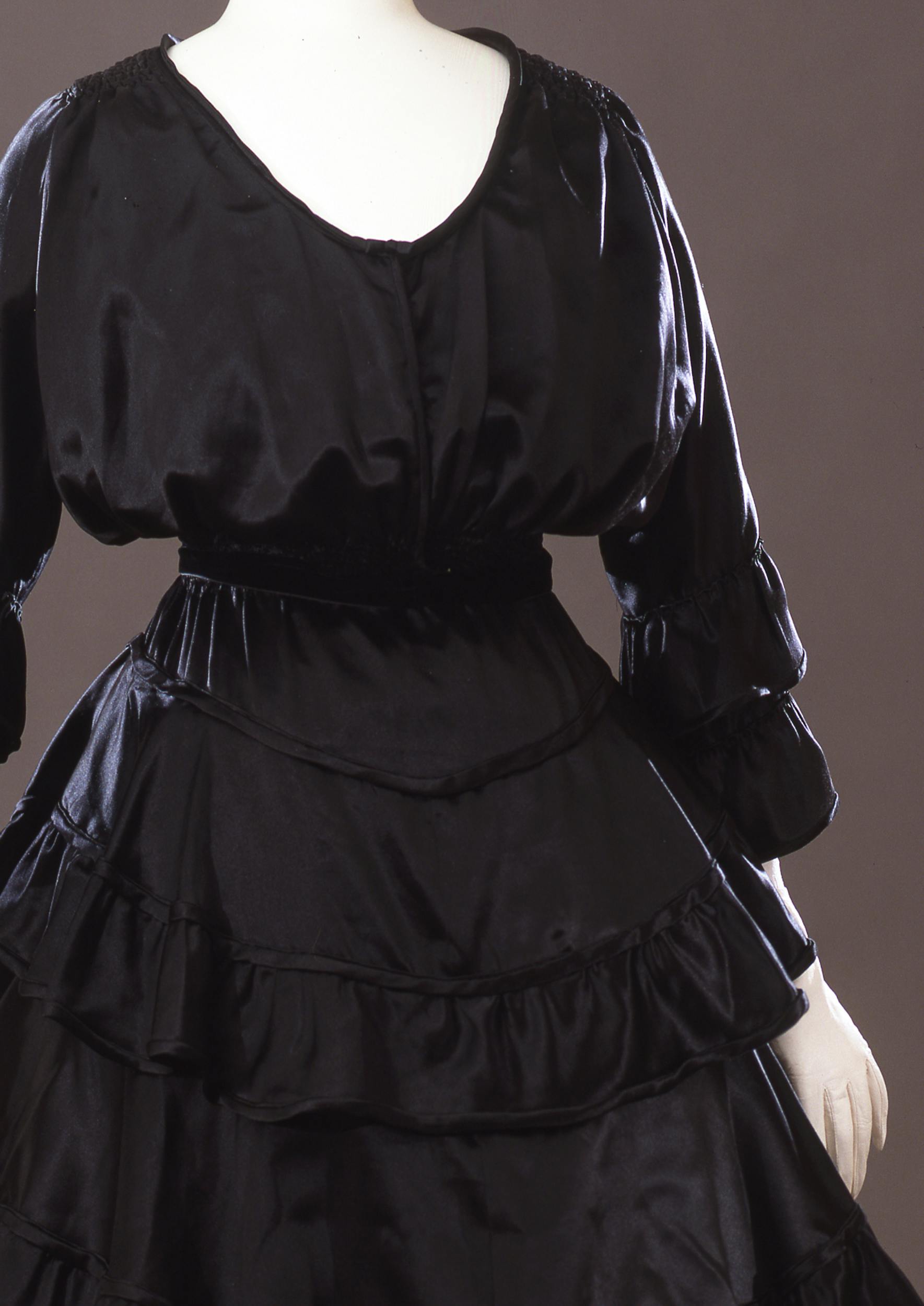Two-piece dress, bodice and skirt
Italian production (label “M. Zuckermann / Milan Corso Venezia 15 / Paris Rue de la Paix 1”)
This dress, which was profoundly different from those proposed by fashion until a couple of years earlier, perfectly reflected the rapid change that affected women's clothing in the early years of the Great War. As large numbers of men were called to the front, women found themselves in roles that were previously precluded to them, and for their new jobs as clerks, nurses, as well as factory workers or bus drivers, they needed comfortable clothing that allowed greater freedom of movement. Within a few months, the long, narrow skirts in vogue in the first half of the 1910s, which forced people to walk with short steps, disappeared from the pages of fashion magazines, being replaced with wide and significantly shorter skirts, combined with soft blouses or straight-fit jackets, which no longer required to be worn over constricting busts.
The dress on display, although not intended for work as suggested by its precious fabric, perfectly embodied these dictates. The bodice is loose-fitting, thickly gathered at the shoulders, low-necked, and with long, flared sleeves. It is fastened at the front with metal hooks. It was an easy dress to wear and carry. The flounced skirt, decorated with three ruffles of the same fabric, is wide and ends well above the ankles, thus allowing to walk nimbly and without constraint. Even the choice of the colour reflected the trend of the war years, which led to a preference for dark, sober shades that were more practical and better suited for a more active life.
However, this fashion would last only a few years, as the hardship of the conflict and the difficulty of finding fabrics, especially precious ones, forced a new stylistic change, thus leading to tighten once again women's skirts in order to use less fabric.
Donation by Umberto Tirelli, Rome
Non-original accessories.
Umberto Tirelli e Maria Cristina Poma, Donazione Tirelli: la vita nel costume, il costume nella vita, Arnoldo Mondadori, Milano, 1986, p 208; La Galleria del Costume/4, Centro Di, Firenze, 1990, p 82.
